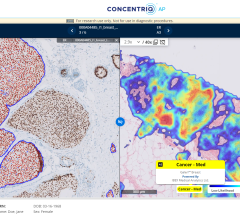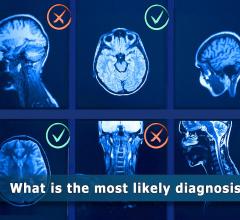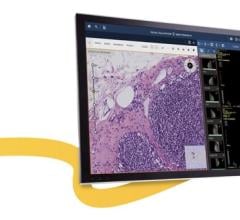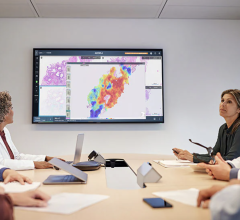At RSNA 2010, eMix will display several solutions for electronic medical information exchange. Cloud Computing eMix is a cloud computing-based technology. The customer purchases the service on a per-use basis, thus avoiding substantial capital, management and maintenance costs. There is no hardware, software or maintenance contract to purchase. Some medical institutions using eMix do not even have picture archiving and communication systems (PACS), the standard technology for viewing, storing and distributing digital imaging data. Physicians can also download imaging exams via eMix for storage in their electronic medical records (EMR) inbox. Wider access to high-speed Internet has made eMix a highly feasible solution for medical facilities, physician offices and patients alike. Finally, economic pressures have made cloud-based solutions far preferable to older, more costly solutions to the medical image-sharing problem such as burning and shipping CDs or DVDs, or transmitting via virtual private networks (VPNs). Security Medical institutions that exchange data must do so securely to comply with HIPAA requirements, as well as their own internal confidentiality policies. eMix has eight layers of healthcare IT security that together enable institutions to achieve secure data sharing. The layers are: • Physically Secure Data Center: Can only be accessed by authorized personnel only after biometric verification. • Network Access Security: Restricts network access with a double, cumulative layer of firewalls. • Member Verification: Only verified members of authorized institutions can become users. • User Authentication: Verified users must create complex passwords to gain access. • SSL 3.0/TLS 1.0 Encryption Data Transmission: Ensures that data in transit is virtually indecipherable if intercepted. • Data Redundancy and Retention: eMix data resides on multiple redundant content servers, database servers and web servers at the data center. • Auditing: All transactions between eMix clients and servers are auditable. Any data lost because of a failure at the user institution can be recovered from the central server. • New Recipient Confirmation: An eMix sender must verify the new recipient’s identity, confirm they have the correct email address and confirm the new recipient as legitimate. eMix vs. VPNs Like eMix, VPNs make it possible for medical institutions with disparate PACS to securely exchange radiology data over the Internet. However, they are ad hoc arrangements that connect only two facilities at a time. They are also labor- and capital-intensive to create and maintain. Here is how eMix and VPNs compare: • Labor and material costs: Setting up a VPN requires hardware and software acquisitions plus a time investment by an experienced IT technician. It also must be maintained by a technician. With eMix, there is no hardware or software to purchase and no maintenance required. • Universality: VPNs can only context two hospitals. In contrast, multiple facilities could exchange data with each other via eMix. • Security and privacy: VPNs give hospitals the ability to view unrelated data, not just the specific files of interest. eMix creates no such access. All user institutions’ internal networks remain private and secure. • Maintenance: VPNs create a significant maintenance burden that is magnified by the number of VPNs that must be serviced. There is no maintenance with eMix at all, as the provider maintains and upgrades the technology. For more information: www.emix.com
If you enjoy this content, please share it with a colleague
Related Content
July 26, 2024 — GE HealthCare and Amazon Web Services, Inc. (AWS), an Amazon.com, Inc. company, announced a strategic ...
July 24, 2024 — Proscia, a developer of artificial intelligence (AI)-enabled digital pathology solutions for precision ...
July 23, 2024 — Professional registration is open for RSNA 2024, the world’s largest radiology forum. This year’s theme ...
July 23, 2024 — Researchers at the National Institutes of Health (NIH) found that an artificial intelligence (AI) model ...
July 12, 2024 — AGFA HealthCare, a global leader in healthcare imaging management solutions, announced that Enterprise ...
July 12, 2024 — Diagnosing cancer and providing the personalized therapy it often requires, is a collaborative effort ...
Be sure to check out the latest digital edition of Imaging Technology News (ITN), featuring the Mobile C-arm Systems ...
Back in 1966, Joni Mitchell sang these words in her song “Both Sides Now:” I’ve looked at clouds from both sides now ...
ITN conducts a bi-monthly survey to its readers on a variety of topics, which is used to create the Last Read, a unique ...


 July 26, 2024
July 26, 2024 








